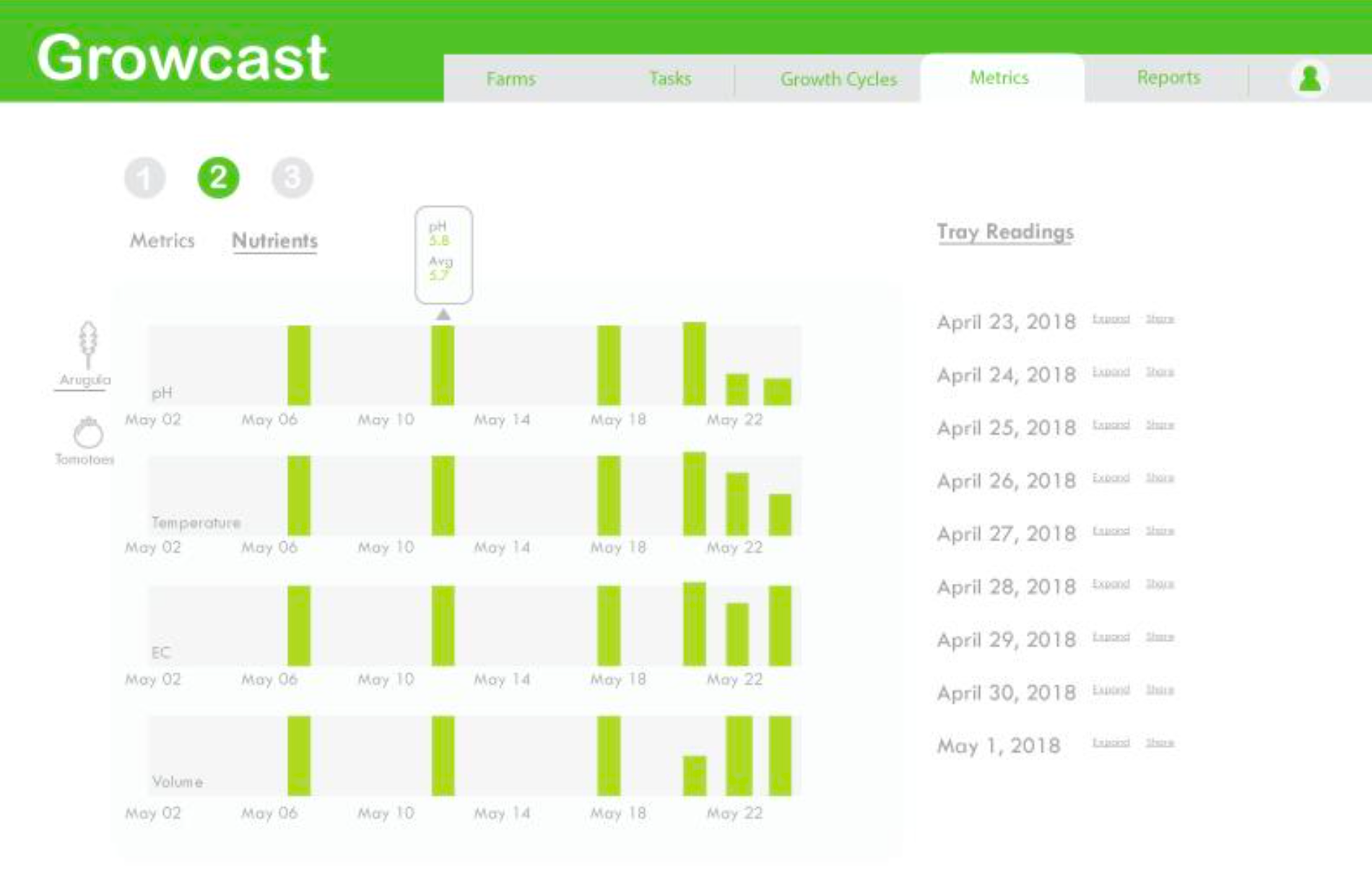In Fall 2018, I took 51-377: Sensing Environments, a class that explored using computer vision and 3D imaging technology to aid in analyzing one's surroundings. For our final project, we worked closely with Kaarta, a Pittsburgh-based startup that manufactures hand-held 3D mapping devices.
PROBLEM:
Kaarta claimed that their "wide range of applications" and "spectrum of stakeholders" was a strength; they could solve a multitude of problems across architecture, engineering, construction, and mobile robotics. However, we viewed this as a weakness; their focus was too broad and they would soon spread themselves thin.
SOLUTION:
As a more specific use-case for Kaarta, me and my team developed Growcast, an indoor farm managing database and network that uses LiDAR and computer vision to manage crop growth and yield forecast data.
Promotional video for our service, Growcast
PROCESS LOG
We worked in 2 week sprints, logging our process in a process log:
RESEARCH
Once we finalized our idea for indoor crop management, we dove into research in LiDAR technology, computer vision for plant detection, indoor farm statistics, and points of contact for farm/plant-related questions.
We found RoBotany, a company that combines robotics and farming to create "smart indoor farms." Since they're also based in Pittsburgh, we thought they'd be the perfect resource for information and feedback. However, they never answered our emails, so we moved on.
Our next resource was Phipps Conservatory, right in our backyard. In addition to having their own Production Greenhouse with multiple types of plants, Phipps also kept conditions computer-controlled using a system called Argus Controls.
Before our visit, we drafted a list of questions to ask about the greenhouse which included:
1. What do you look for in plant growth?
2. What factors affect plant growth the most?
3. How do you predict plant yield/health?
4. Do you “overplant”?
5. How do you maintain plant health?
6. Would it be helpful if you had one system in place that displayed all the data related to plant maintenance and
growth?
7. What features of the system would be useful?
We found that a lot of manual effort goes into checking plants daily for insect/bacterial infestations and textural differences, and weighing produce twice a week, both of which could be done with more advanced technology. We also found that Argus Controls only tracks the greenhouse environment, not plant growth. A large problem for any farm is overplanting, which leads to cost inefficiency and negative impacts on the environment. The horticulturalists at Phipps responded that having flagging features in their controls system that track plant growth would be extremely useful.


UI DESIGN ITERATIONS
Now that we understood what systems already existed in the world of "smart indoor farms" and what was lacking, we moved on to designing a UI for Growcast.
We knew we wanted to target small indoor farm owners, who usually own more than one indoor farm and maintain many different types of produce. Certain readings, such as PH levels, temperature, and overall volume, should be clearly visible, and we also wanted to provide task lists and farm reports.
UI Iteration 1:




UI Iteration 2:




FINAL UI DESIGN:




We also created a service flow diagram that outlined the entire process of planting to shipping: